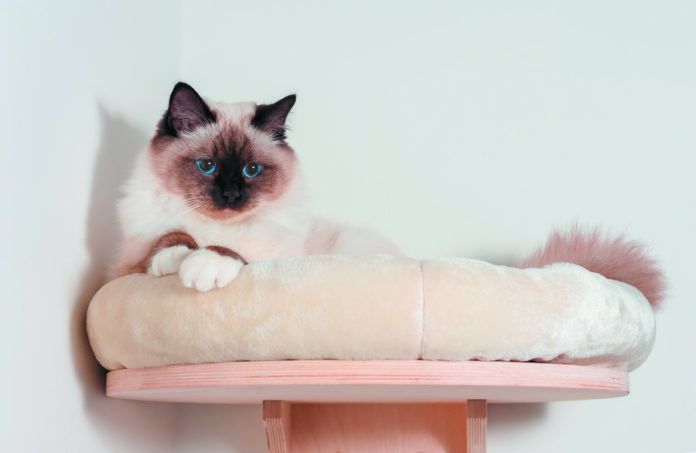If your cat “goes” in spots other than the litter box, you’re not alone. Inappropriate elimination is the most common concern among cat owners.
And perhaps like many other cat “parents,” you’re frustrated because you believe you’ve tried everything. You’ve switched to the type of litter most commonly preferred by cats — the fine-textured, clumping kind. You’ve added another litter box to the house so that you have one more litter box than the number of cats in your home. You scoop the litter box twice a day and top it off with more litter between weekly washings with hot soapy water.
But you keep finding wet areas away from the box as well as other “deposits.” And you know it’s not a medical problem because you’ve already had the veterinarian rule that out. What else can you do? You’re at your wit’s end.
Take heart. While you’ve been focused on the litter box, sometimes it turns out the problem has nothing to do with that. There are several steps you can take not directly related to your cat’s “bathroom” to help her feel comfortable voiding there.
Make sure your cat has high-up places to rest or cocoon away from people—and other cats. Provide cardboard containers and other cozy enclosures for her to hang out in, too. The more space a cat feels she has to herself when she wants to “get away from it all,” the less stress she will have. And less stress can go a long way toward helping a cat behave the way she should, including voiding in the right place.
Ensure that your pet has enough opportunities to express her predatory drive. Give her toys to chase (as you pull them away from her) and perhaps feed her from food puzzles that make eating more challenging and therefore more rewarding. Giving a cat opportunities to act on her instincts also reduces stress, thereby keeping her from acting out by not using the litter box.
Put clothing away or in a closed laundry basket rather than leaving it on the floor and making it more enticing as a spot for a cat to relieve herself.
Place shoes, backpacks, and luggage with unfamiliar odors out of your cat’s reach. Why tempt fate?
Block your cat’s view of cats and other animals that are outside if it’s possible that’s what’s causing her to eliminate in inappropriate places. You certainly don’t want to block your pet’s view of the outdoors completely; seeing outside is part of her environmental enrichment. But if a particular feral cat or other animal keeps coming within view of a certain window, it’s worth covering that window and seeing if it helps. Likewise, disrupt sight of any spot visible from your home that an outside animal has decided is a comfy place to rest.
Deny access to a spot that your cat has been using to void. That can help undo a habit. You can also place something in that spot that would make the cat less interested in relieving herself there — perhaps the dog food bowl or even her own food or water.
None of these steps are sure bets on their own. But taken together, along with making sure your cat’s litter box has plenty of her preferred litter and is frequently cleaned and topped off, can go a long way to helping her eliminate where she should.
Because urine will fluoresce under ultraviolet light in the dark, you can use a black light to find soiled areas that have already dried.
➤ Carpet: Scrub the spot with a 10 percent (heavily diluted) solution of enzyme-based laundry detergent. That will remove the protein content of urine. Then let the area dry, and spray with isopropyl alcohol to remove the fat component. You may need to pull the carpet up for several days and treat the flooring, too (with polyurethane if it’s made of wood). If the padding under the carpet is soiled, you’ll want to cut out the affected area and replace it with new padding. Before tacking the carpet back down, treat the back of it with urine odor remover. (Zero Odor has been shown to work well.)
➤ Wood: Use a wood soap and seal with polyurethane or another sealant.
➤ Bedding and upholstery: Launder according to manufacturer’s directions. If the upholstery is made of leather, only use a product intended for that material.




